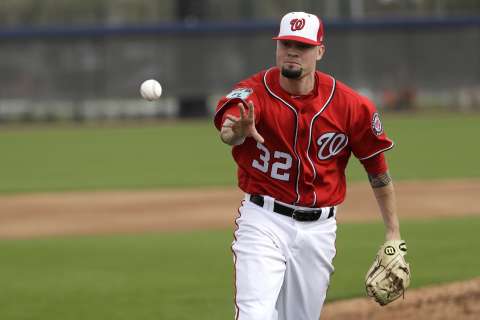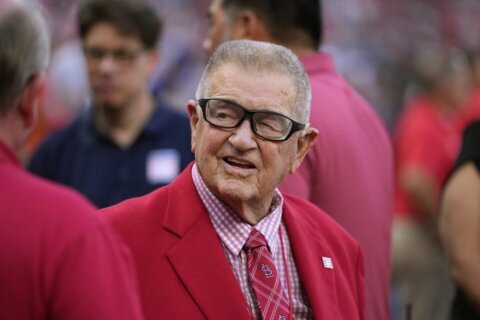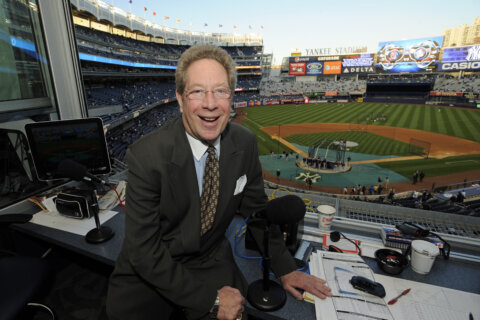WEST PALM BEACH, Fla. — As the final permits remained unsigned and the finishing touches were yet to be applied in the rush up to the opening date of the Ballpark of the Palm Beaches, the Washington Nationals weren’t the only ones hoping everything would be completed in time to move into their new Spring Training home. The Nats split their complex with the Houston Astros, both teams relocating from less convenient and older complexes to the north to their new digs in West Palm Beach.
But aside from the fact that both play in the same stadium for games, and that both have giant logos in front of their respective entrances, you hardly know the other team is even there from the opposite side’s clubhouse and training facility. While dozens of players from each organization report to the same piece of property each day, they rarely, if ever, see anyone not sporting their own colors. The complex has separate entrances and practice facilities and is physically divided in a way that the only real shared space is the Ballpark of the Palm Beaches itself.
“You don’t see them unless you’re playing them,” Astros outfielder George Springer told WTOP of the Nationals. “You have that own-complex vibe; you just share the same stadium.”
The idea of sharing a Spring Training complex has gained more traction in recent years. When the Los Angeles Dodgers left Vero Beach for Arizona, they joined with the Chicago White Sox to share the Camelback Ranch complex in Glendale, which opened in 2009. Two years later, the Arizona Diamondbacks and Colorado Rockies opened the doors to Salt River Fields, a shared complex in Scottsdale. And while the Boston Red Sox have opted for single-occupancy new buildings recently, the benefit of a shared space is obvious in terms of both a lowered construction cost burden and a reduction of days when each team has to travel for games.
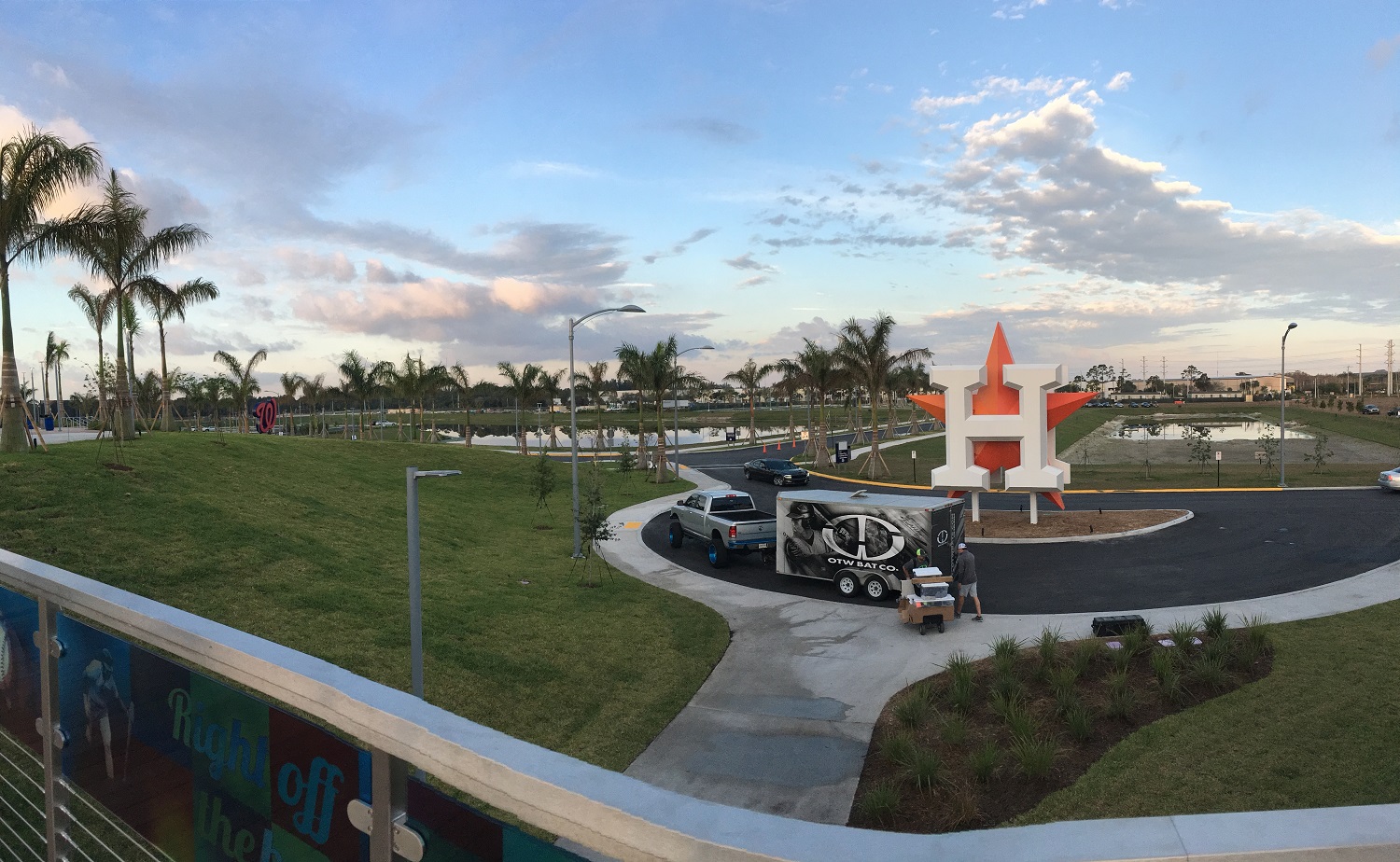
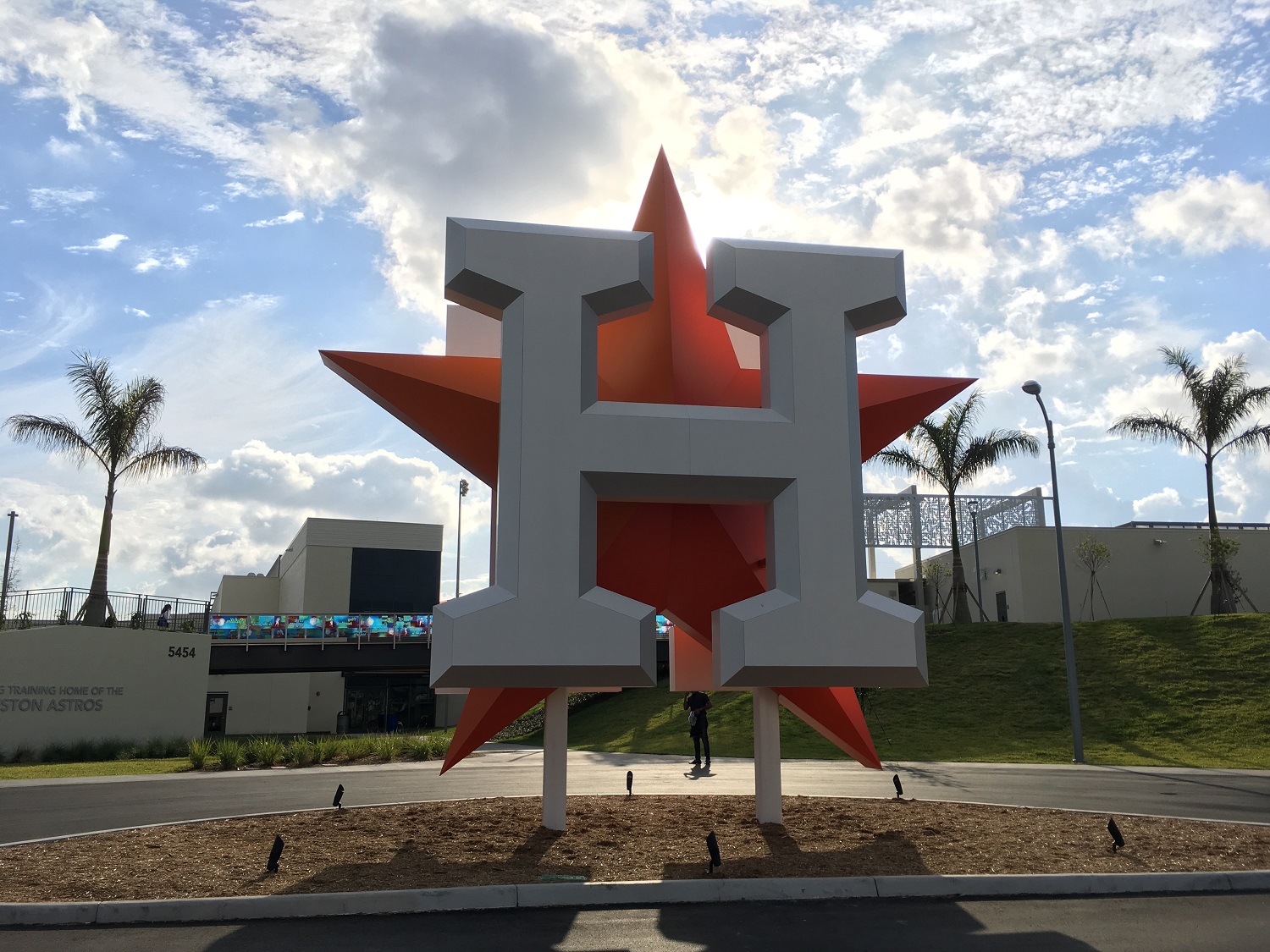
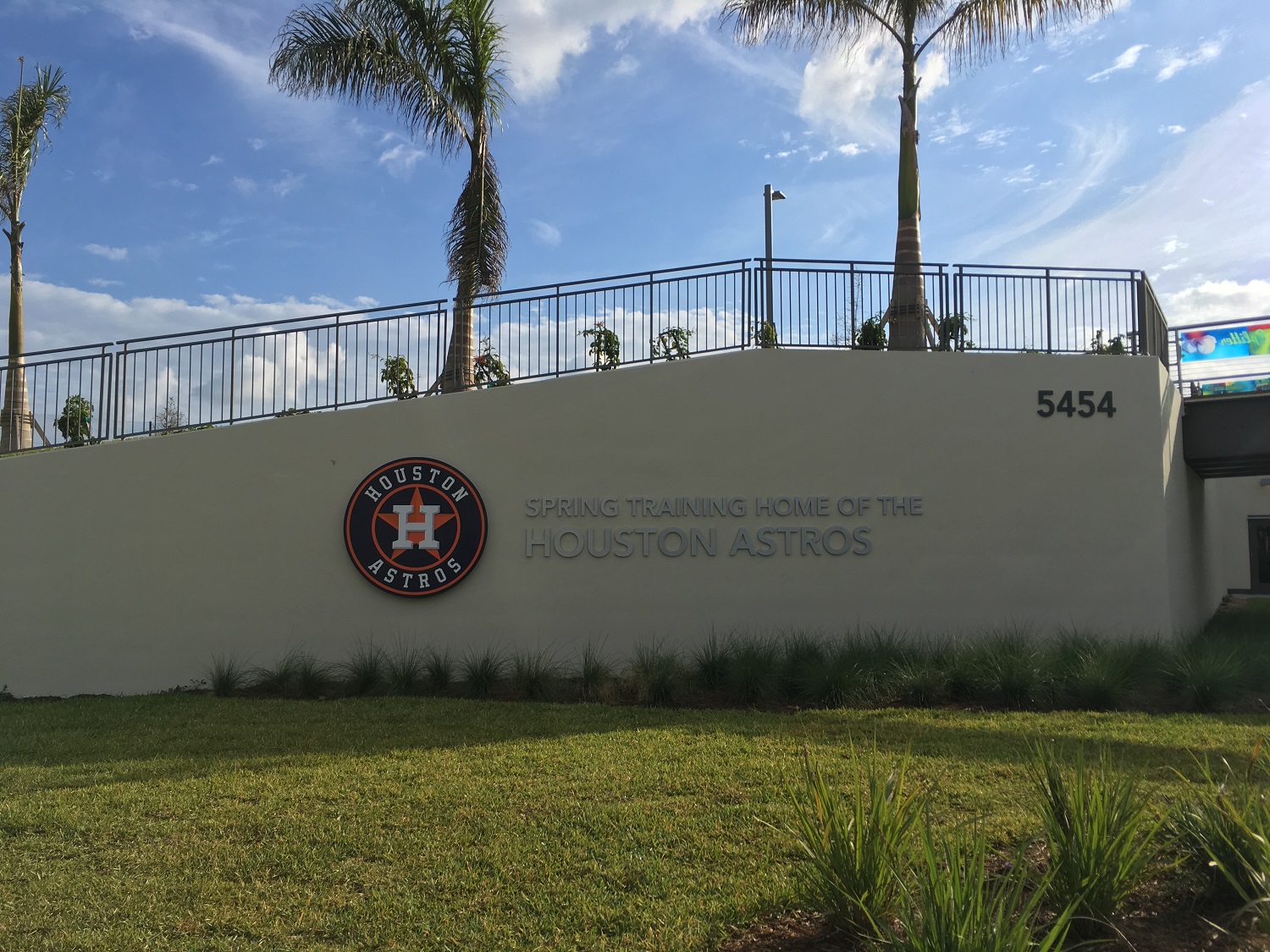
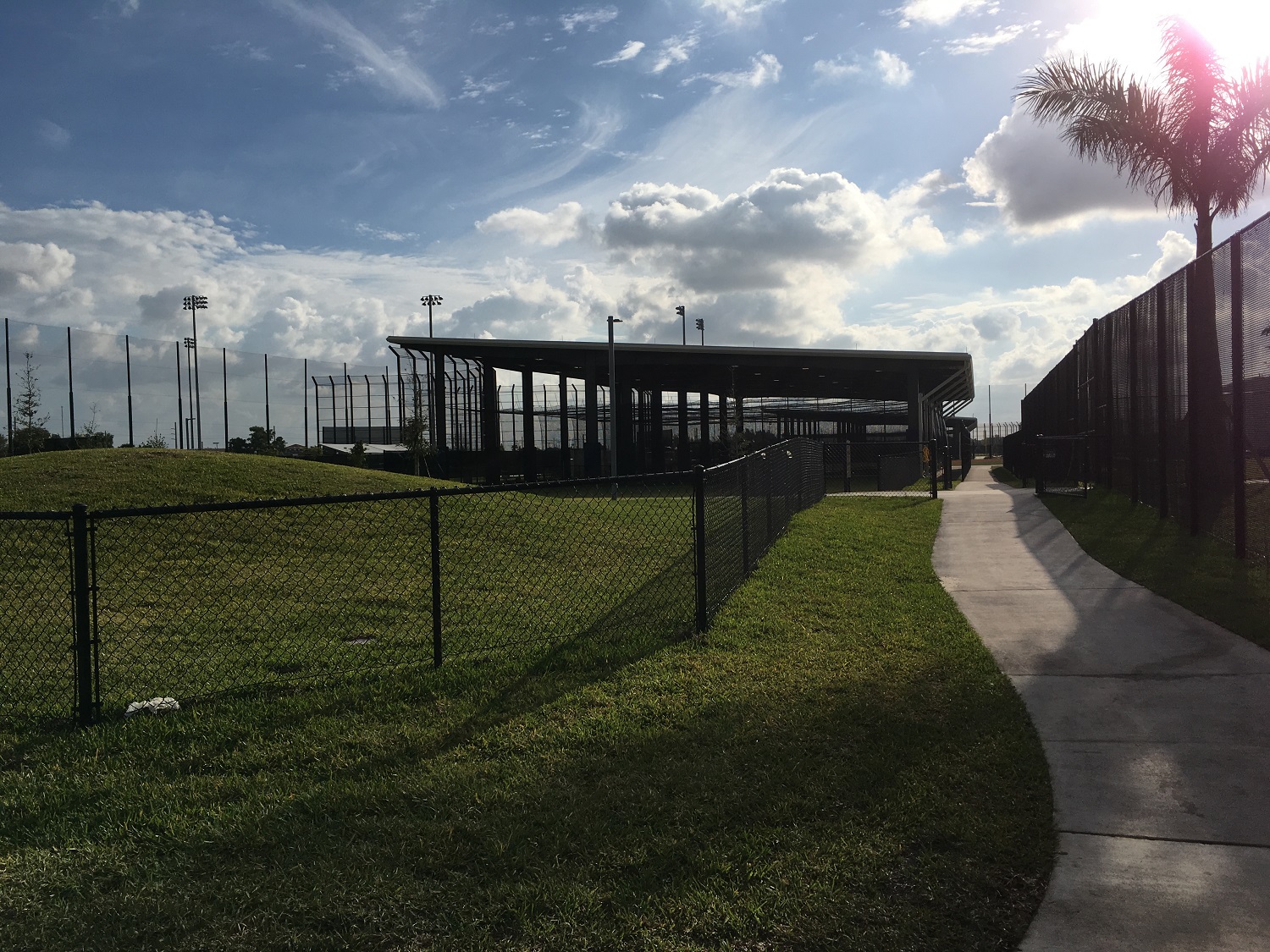

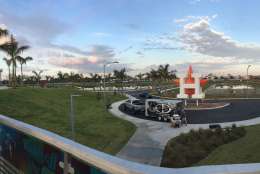
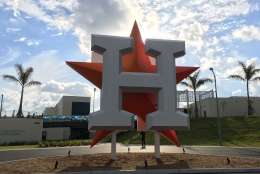
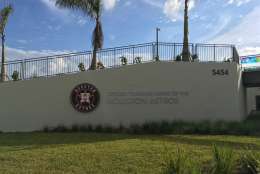
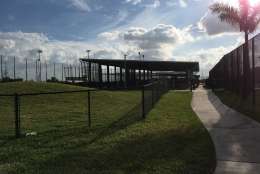
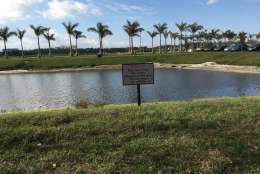
One Astros pitcher benefits even more from the new setup and perhaps has the best perspective on the improvements that both teams are enjoying at the new complex. Brad Peacock came up through Washington’s minor league system after being drafted and signed by the Nats in 2006, spending five springs in Viera. He’s been in Houston since 2013, spending the time since then at spring camp in Kissimmee.
Oh, he’s also from Palm Beach and still lives there in the offseason, meaning he commutes all of 15 minutes from his own house to the complex.
While Peacock is impressed with the weight room and quality of the practice fields, one amenity stands above the rest.
“Definitely the clubhouse,” he said of the expansive space, which, like Washington’s, includes a massive logo overhead in the middle of the room. “There’s a lot of room in here, a lot of TVs, a lot of card games.”
But just because he knows the area very well doesn’t mean he’s comfortable finding his way around the ins and outs of his new Spring Training home.
“There’s a hallway that goes what feels like a mile,” he said, waving his hand at the back end of the clubhouse, away from the showers. “So I have no idea what any of that is down there.”
Springer doesn’t single out anything in particular that stands out. He’s just happy to be playing in a sparkling new setup.
“It’s brand-new,” he said. “You can never go wrong with anything that’s new.”
One aspect the Astros did not leave behind is the prospect of a gator sighting. During a Nats-Astros Spring Training game in Kissimmee in 2013, a gator made its way out of the swamp just below the visiting clubhouse while media waited to enter.
Sure enough, there are warning signs in West Palm Beach for the shallow bodies of water in the trenches that line the parking lots. Springer, for his part, hasn’t seen any visual evidence of them at this point.
“I have not seen one here yet,” he said. “But it’s Florida, so I’m pretty sure there’s some around here.”

